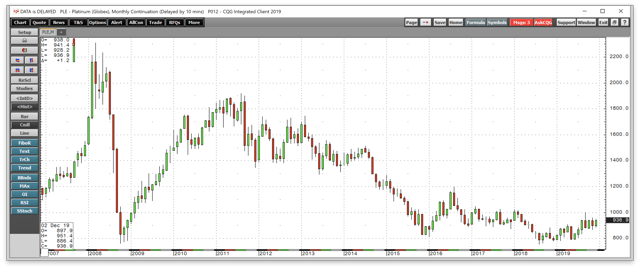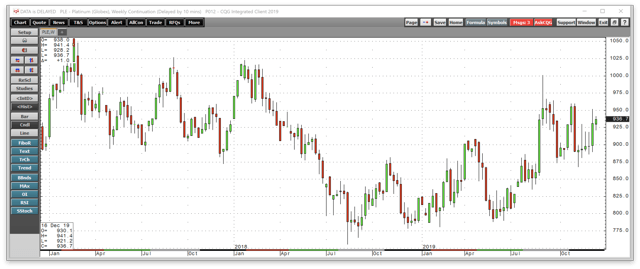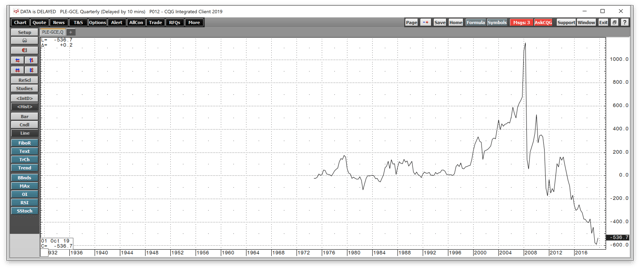SPONSOR: CardioComm Solutions (EKG: TSX-V) – The heartbeat of cardiovascular medicine and telemedicine. Patented systems enable medical professionals, patients, and other healthcare professionals, clinics, hospitals and call centres to access and manage patient information in a secure and reliable environment.

mHealth Market is Expected to Expand at a CAGR of 22.1% During 2017 to 2025
- According to experts from TMR, the global mHelath market stood at US$23.9 bn in 2017
- This revenue is expected to gain an impressive value of US$118.4bn by the end of 2025
- Experts project this growth to occur with a meteoric CAGR of 22.1% during the forecast period from 2017 to 2025
Reita Cabrera

The global mHelath market bears a highly fragmented vendor landscape, says Transparency Market Research (TMR) in a recently published report. This is solely because of the existence of large, medium, and small-scale players in the market. Withings, FitBit, Apple Inc., Jawbone, and Dexcom are the dominant players working in the global mHelath market.
Out of the various strategic alliances adopted by players in the global mHelath market to hold a sizeable stakes, capitalizing on the emerging opportunities and acquiring latest technologies and tools has gained maximum popularity. The level of competition among leading vendors is getting escalated with rising use of technologies and smart devices such as wearables. The global mHelath market is expected to grow steadily due to the presence of highly established players who are concentrating on improving their product quality, facilitating product differentiation, and enhancing geographical reach. These companies are also attempting to introduce advanced and new products into the industry on a daily basis.
According to experts from TMR, the global mHelath market stood at US$23.9 bn in 2017. This revenue is expected to gain an impressive value of US$118.4bn by the end of 2025. Experts project this growth to occur with a meteoric CAGR of 22.1% during the forecast period from 2017 to 2025.
Among various products in the global mHelath market, connected medical devices hold substantial share, which is expected to boost the global mHelath market during the forecast period. This is because of rising focus towards fitness and increasing use of heart rate monitors among people. Region wise, North America is expected to lead the global mHelath market in the coming years. This is attributed to a strong technological infrastructure along with high healthcare expenditure in the region.
Integration of Wireless Technologies to Fuel mHealth Market’s Growth
Health-related technologies and mobile applications are often known as mHealth, which helps in managing patients’ experiences. Such health mobile technologies and apps utilize advanced data analytics to help medical professionals in providing their patients best care at low cost. These health mobile applications facilitate easy and better health management through simple apps such as diet, exercise trackers, and calorie-counting. Such USPs are driving the global mHelath market. Along with this, rising penetration of internet connections and smartphones, and rapid technological advancements in healthcare industry are the factors majorly fueling growth in the global mHelath market.
Furthermore, mHelath ensures continuous communication between medical professionals and patients, thereby allow physicians to monitor, and diagnose patients without seeing them in person. Such benefits are also boosting the global mHelath market. Apart from these, rapid adoption of connected devices for monitoring various chronic diseases, and increasing demand for cost-effective medical services are also propelling expansion in the global mHelath market.
Low Physician Density May Hinder mHealth Market’s Growth
Growing reluctance of physicians to move over conventional methods, lack of regulations, concerns about data security, and low density of skilled professionals are some of the major challenges in the global mHealth market. Nonetheless, persistent demand and rising prevalence of various lifestyle disorders is believed to help industry players overcome these challenges in the near future.
About Us
Transparency Market Research is a next-generation market intelligence provider, offering fact-based solutions to business leaders, consultants, and strategy professionals.
Our reports are single-point solutions for businesses to grow, evolve, and mature. Our real-time data collection methods along with ability to track more than one million high growth niche products are aligned with your aims. The detailed and proprietary statistical models used by our analysts offer insights for making right decision in the shortest span of time. For organizations that require specific but comprehensive information we offer customized solutions through adhoc reports. These requests are delivered with the perfect combination of right sense of fact-oriented problem solving methodologies and leveraging existing data repositories.
TMR believes that unison of solutions for clients-specific problems with right methodology of research is the key to help enterprises reach right decision.
Source: http://newsdistribute.com/2019/12/23/mhealth-market-is-expected-to-expand-at-a-cagr-of-22-1-during-2017-to-2025/

















